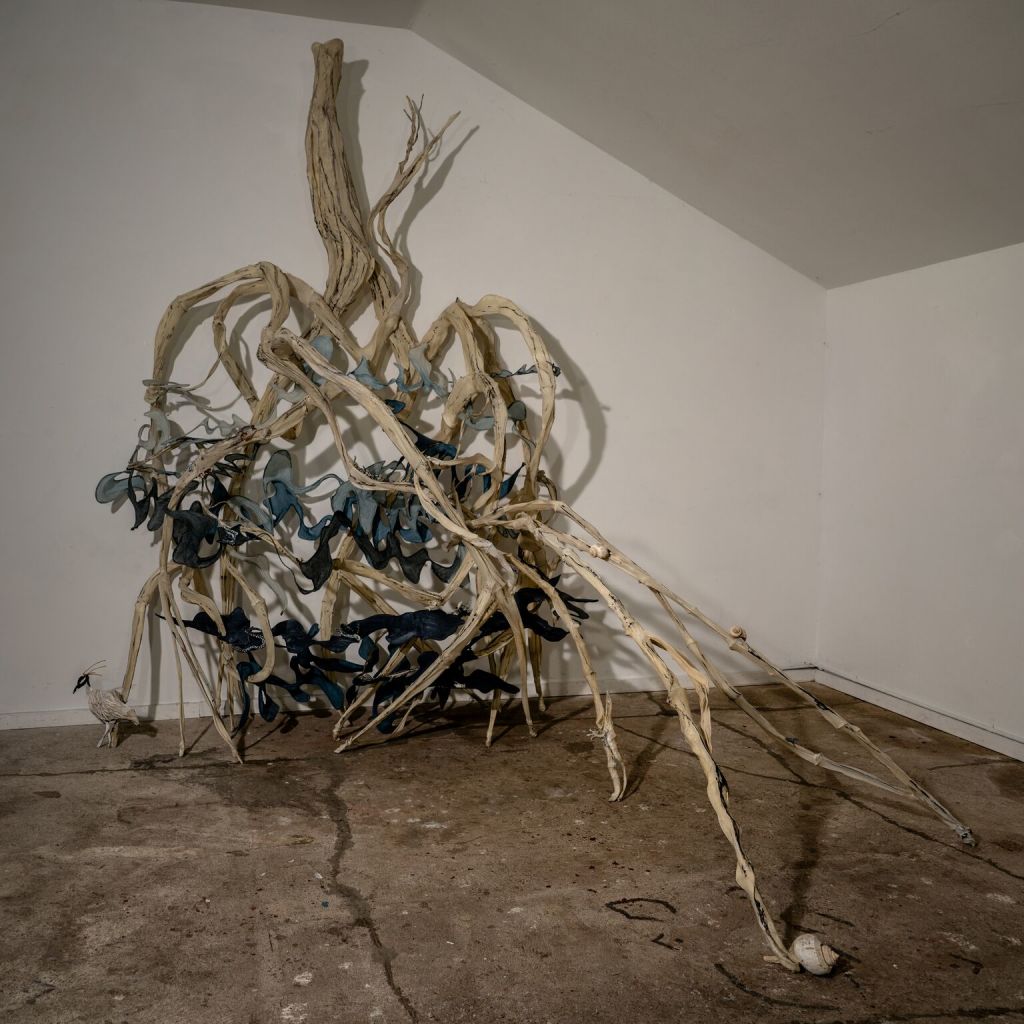Eve Ingalls: Shelters
current exhibitions | upcoming exhibitions | past exhibitions
February 8-March 11, 2018
Opening Reception: Fri. February 9, 6-9pm
Exhibition walkthrough with the artist: Sun. March 11, 4pm

SOHO20 is pleased to present Shelters, an exhibition of new sculptures by artist member Eve Ingalls.
Over the years, humans have taken note of animals’ extraordinary skills and ingenuity as builders, paving the way for studies in biomimetics and synthetic biology. Ingalls’ sprawling sculptures look at the roles that animals and trees play in creating a natural architecture in the world.
In a sculpture constructed from handmade paper and wire, Just Leave it to Beaver, Ingalls singles out the beaver as masters of adaptation and invention for their delightfully creative intuitions. From the work’s circular pond, the stacked paper logs rising out of the water, to the suggestion of bark remains, one sees a beaver lodge take shape. The presence of human hands, legs, and feet hidden in the tree form that looms within the sculpture, as well as the work’s title imply that it is we, the humans, who cause interference – not the beaver-made dam. Ingalls suggests that we should step away and trust the beaver’s sensibilities in forging its own environment.
Another prominent feature of this exhibition is the Mangrove. In a work constructed out of similar materials – wire and handmade paper, Ingalls pays homage to the impressive, web-like structure of this tree, which provides housing for a large variety of flora and fauna alike. The work mimics the elaborate and far-reaching root systems, which function to filter salty coastal water. Informally called the ‘walking tree’ because of the ease at which it can move and adjust in a given location, the physicality of this piece likewise reaches its ‘roots’ as far as it can, cascading through the space of the gallery.
Through these large pieces and other smaller works, Ingalls warns us of environmental issues of which we should be wary. Employing pointed anthropomorphic and biomorphic abstraction, she comments on rising sea levels and the overbearing influence of human development. Her works deliver the strong suggestion that we continue to respect and understand nature’s inclinations. Each work balances treachery and beauty, illuminating humans’ sometimes-unintentional collaborations with nature, and offering a glimpse of how the ‘natural’ world can behave far beyond our expectations.

